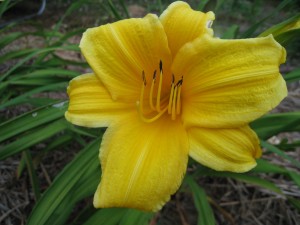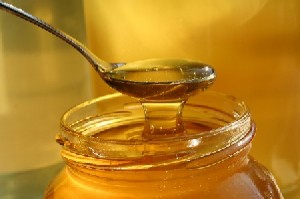More Thoughts on Queen Excluders
When I first started beekeeping, I asked about queen excluders. An experienced beekeeper in the area advised that he never used the things. He called them ‘honey excluders’ and went so far as to tell me that he believed that nectar laden bees would sometimes be so swollen that they couldn’t get through the excluder to store honey. So, he never used them.
What about wax moths? Everyone says that if the queen lays in your honey supers, you’ll end up getting wax moths during the off months. He replied that he would put his wet (extracted) supers back on the hives after getting the honey from them. The bees could then guard/maintain them until the first frost, when he would yank them off and store them stacked in a pole shed nearby. The wax moth wouldn’t bother his supers, even if the queen had laid in them.
So, I decided that I would take this strategy too. I think the primary underlying reason, for me, is that it was just one more thing (both to manage, re the bees, and to purchase, re my wallet) – I was not interested in one more thing. Therefore, I never used them the first few years. In truth, I remember giving a few away that I ended up with when I purchased some fellow’s equipment. I was done with them (before I had ever used them!).
As a side note, there are other good uses for queen excluders than simply keeping the queen out of the honey supers. But, I didn’t know that then…
Things went along just great for a couple of years. My queens would obey the rule that you do not cross the honey barrier, primarily laying and living in my brood chambers – leaving my honey supers alone. Then, it happened – first with one colony and then to several – the crazy Lady crossed the honey barrier! In every case, the colony had put away (capped) two supers of honey. But, when I came to extract, the queen had moved right up the middle (in one case, it was the actual outer two frames) of the hive, laying as she went.
At this time, I had several hives with a mixture of shallows and mediums. This prevented me from simply consolidating the capped frames into one super. In the end, I remember taking just the capped frames (but, being new, I had nothing to replace them with as far as drawn comb is concerned), running home to extract them and returning a day or two later to put them back into the hive. It was a real logistical nightmare (of course, I’d forget one and come back – sometimes months later, to find a mess of wax in that empty slot!)
On the plus side, I was able to successfully store these supers (those with and without brood in them) through the Winter by just stacking them in my shed and didn’t have a wax moth problem. But, storing them over the Winter was not the real challenge that I would face.
After a lot of problems with the queen going up, I did start to use a queen excluder sparingly. I have definitely found that certain lines of queens are more likely to move up (when one moves up in a year, you can be pretty sure that her daughter will move up when you (or they) replace her.) It’s some kind of genetic thing (I moved one hive several times – not because of her proclivity to lay in the honey supers, but for other reasons – and she (or her daughters and grand-daughters) almost always moved up in June or July…so, location seemed to be ruled out.)
The real problem came in the Summer of 2011 when I had two hives really out perform, honey-wise. They put it away like no one’s business. I’d have to check my notes to be sure how many honey supers were on the one at Westover Plantation, but I do know that it was too high for me to look down into the hive without some kind of ladder. The kick in the gut came when I went to get the honey supers and found the hive mostly robbed out. They had swarmed and reduced in population a lot (probably swarmed many times) and simply could not protect all of the honey. The bees were still holding on in their brood area, but most of the honey supers were torn up and I even had some wax moth issues. This was a real wake up call.
So, I realized that I couldn’t always simply leave supers on the hive (nor could I put them all back on the hive once I extracted them.) I needed a way to store them in the Summer. I quickly found that my ‘pole shed stacks’ worked just fine in the Summer, but only with the clean supers that had never had brood in them. Now, I started to understand the wisdom of the queen excluder. You need to keep that queen out unless you can keep the supers to two or three boxes at most. If your colony of honey bees can produce more, you must extract the extra before they need 4 or more supers and put the wet super back on the hives.
But, that is not an option for me. With real life constantly throwing me curve balls and sucking up my time, I need a method that requires the least visits to the hives. Queen excluders were the answer. I not make a concerted effort to keep one on ever hive (I just ordered another group of them for the new hives that I added this year.)
But, what about the honey excluder idea? Well, for one, I never use an excluder on a super of foundation (undrawn frames.) I’ll put it on there once they have it drawn out and are filling it, but not before. Secondly, when I find a hive that is definitely acting reluctant to use a super above an excluder, I’ll remove it for 2 weeks and let them start to use it. I have had queens use that opportunity to jump up there, but mostly they don’t immediately go up there until there’s a lot of resources stored up there to feed the babies.
So, all in all, I now am an advocate of queen excluders. It’s a big flip-flop, but what the heck!? It’s part of beekeeping. What about those times when the queen moves up into the super? I do my best to consolidate the frames with brood evidence and keep them on the hives (to protect them from wax moth) through the Summer and Fall. I’ll remove them for Winter and used them to checkerboard come Spring.
At any rate, that’s where I am on this one now. I’ll probably flip-flop again, based on my history, but I feel very comfortable with my current strategy (of course, I probably said that when I was ‘disrespecting’ the queen excluders too!)


